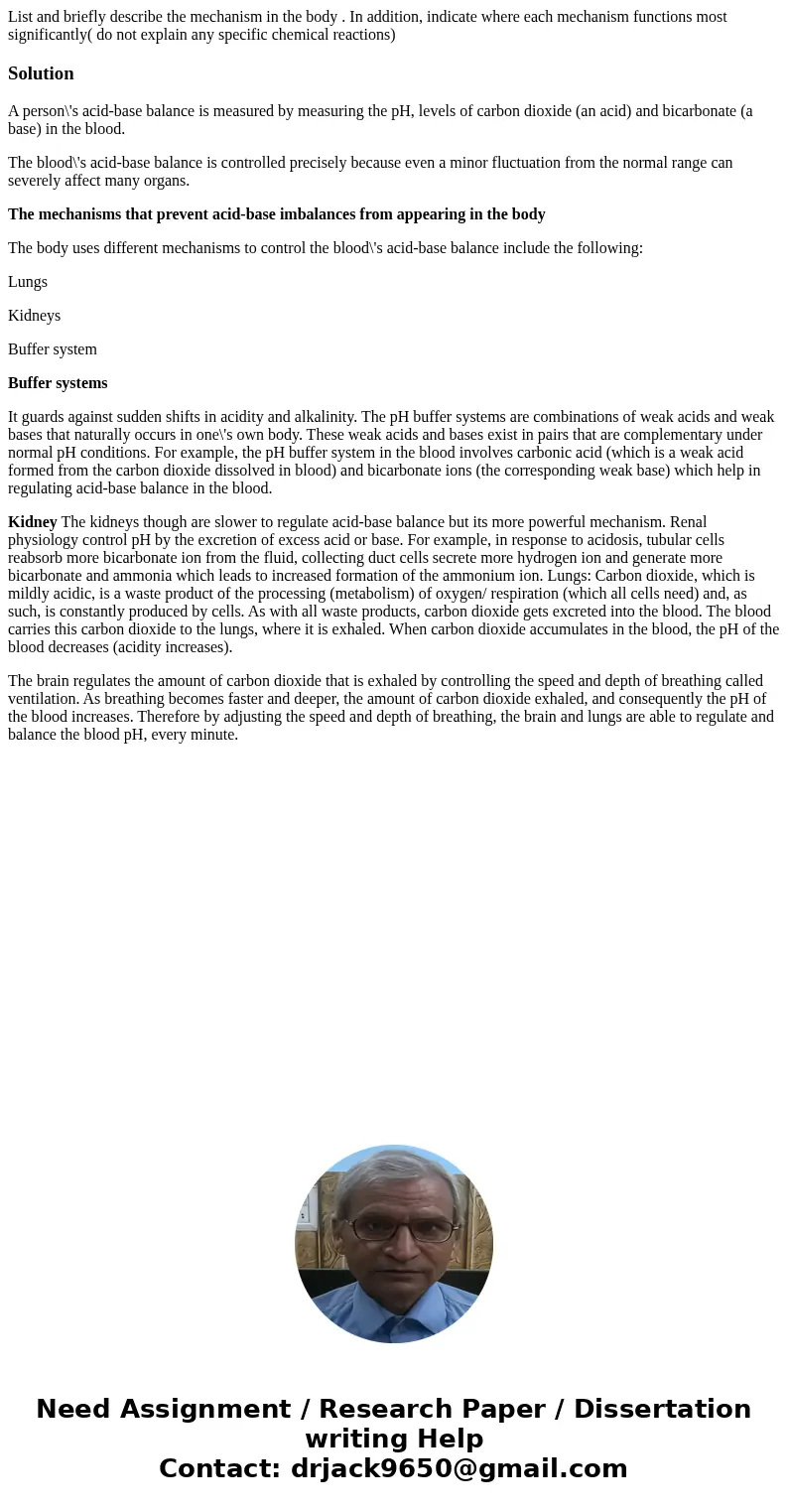List and briefly describe the mechanism in the body In addi
List and briefly describe the mechanism in the body . In addition, indicate where each mechanism functions most significantly( do not explain any specific chemical reactions)
Solution
A person\'s acid-base balance is measured by measuring the pH, levels of carbon dioxide (an acid) and bicarbonate (a base) in the blood.
The blood\'s acid-base balance is controlled precisely because even a minor fluctuation from the normal range can severely affect many organs.
The mechanisms that prevent acid-base imbalances from appearing in the body
The body uses different mechanisms to control the blood\'s acid-base balance include the following:
Lungs
Kidneys
Buffer system
Buffer systems
It guards against sudden shifts in acidity and alkalinity. The pH buffer systems are combinations of weak acids and weak bases that naturally occurs in one\'s own body. These weak acids and bases exist in pairs that are complementary under normal pH conditions. For example, the pH buffer system in the blood involves carbonic acid (which is a weak acid formed from the carbon dioxide dissolved in blood) and bicarbonate ions (the corresponding weak base) which help in regulating acid-base balance in the blood.
Kidney The kidneys though are slower to regulate acid-base balance but its more powerful mechanism. Renal physiology control pH by the excretion of excess acid or base. For example, in response to acidosis, tubular cells reabsorb more bicarbonate ion from the fluid, collecting duct cells secrete more hydrogen ion and generate more bicarbonate and ammonia which leads to increased formation of the ammonium ion. Lungs: Carbon dioxide, which is mildly acidic, is a waste product of the processing (metabolism) of oxygen/ respiration (which all cells need) and, as such, is constantly produced by cells. As with all waste products, carbon dioxide gets excreted into the blood. The blood carries this carbon dioxide to the lungs, where it is exhaled. When carbon dioxide accumulates in the blood, the pH of the blood decreases (acidity increases).
The brain regulates the amount of carbon dioxide that is exhaled by controlling the speed and depth of breathing called ventilation. As breathing becomes faster and deeper, the amount of carbon dioxide exhaled, and consequently the pH of the blood increases. Therefore by adjusting the speed and depth of breathing, the brain and lungs are able to regulate and balance the blood pH, every minute.

 Homework Sourse
Homework Sourse